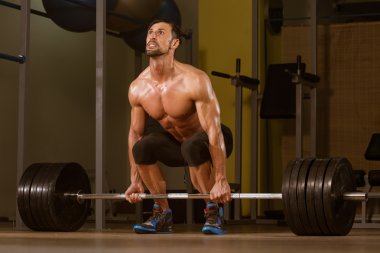
Body Weight Exercises That Mimic Deadlift (7 Important Exercises)
Unlock the power of bodyweight exercises that mimic deadlift and transform your fitness routine without a single piece of equipment. Imagine harnessing the strength and functional benefits of one of the most effective compound movements in weightlifting, all from the comfort of your home or on the go. These innovative exercises engage multiple muscle groups, improve your core stability, and boost overall strength, making them perfect for anyone looking to build a solid foundation of fitness. Dive into this guide and discover how to achieve the gains of a deadlift with nothing but your own body weight.
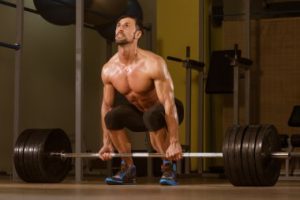
Body Weight Exercises That Mimic Deadlift
Bodyweight exercises that mimic the deadlift are effective for building strength and muscle. These exercises target similar muscle groups, including the glutes, hamstrings, and lower back. Key movements include hip hinges, single-leg deadlifts, and glute bridges. These exercises can be done anywhere without equipment. They are perfect for maintaining fitness.
Hip Hinges
Hip hinges are foundational to replicating the deadlift. They engage the glutes, hamstrings, and lower back. Stand with feet hip-width apart, and hinge at the hips. Keep the back straight and core tight. Lower your torso while pushing the hips back. This motion closely mirrors the deadlift’s form, making it an excellent alternative. Hip hinges also improve posture and stability, key benefits often sought after in deadlift training.
Single-Leg Deadlifts
Single-leg deadlifts enhance balance and target unilateral strength. Stand on one leg, slightly bend the knee, and hinge at the hips. Extend the other leg behind you. This variation targets the same muscle groups as traditional deadlifts. It also addresses muscle imbalances. Single-leg deadlifts can be challenging, but they are incredibly effective for building lower body strength. They are particularly beneficial for athletes needing stability.
Glute Bridges
Glute bridges are great for isolating the glutes and hamstrings. Lie on your back with knees bent and feet flat on the ground. Lift your hips towards the ceiling while squeezing your glutes. This exercise mimics the hip extension in deadlifts. Glute bridges also strengthen the lower back, enhancing overall stability and strength. They are a perfect addition to any bodyweight workout routine.
Bodyweight Good Mornings
Bodyweight good mornings are excellent for targeting the posterior chain. Stand with feet shoulder-width apart and place your hands behind your head. Hinge at the hips and lower your torso forward, keeping your back straight. This exercise closely resembles the deadlift motion and effectively engages the same muscle groups. It’s ideal for improving flexibility and strength in the lower back and hamstrings.
Back Extensions
Back extensions can be performed without equipment to strengthen the lower back. Lie face down on the floor, hands by your sides. Lift your upper body off the ground while keeping your feet on the floor. This movement mimics the lower back engagement in deadlifts. It is crucial for building a strong and stable core. Back extensions also enhance overall posterior chain strength, important for deadlift alternatives.
Hip Hinge Movement
Importance of Hip Hinge in Deadlifts
The hip hinge movement is a fundamental biomechanical pattern crucial in exercises like deadlifts, emphasizing efficient force generation and injury prevention. Mastering this movement ensures proper form and technique, critical for maximizing performance and minimizing injury risk during deadlifts. Proper form involves maintaining a neutral spine, activating the core, and shifting the hips back while keeping a slight bend in the knees.
This alignment optimizes the distribution of weight through the posterior chain—comprising the glutes, hamstrings, and lower back—enhancing muscle engagement and strength development. Effective hip hinge technique not only improves power output but also reduces strain on the lower back by transferring load effectively through the hips, promoting muscular balance and joint stability. In summary, the hip hinge movement is indispensable for deadlifts, supporting optimal performance, muscle activation, and injury prevention through proper form and effective muscle engagement.
Bodyweight Hip Hinge
Description and steps
The hip hinge movement is a fundamental exercise technique that focuses on proper hip flexion and extension while maintaining a neutral spine. To perform a bodyweight hip hinge, begin by standing with feet hip-width apart, toes pointing forward. Engage your core and slightly bend your knees. Initiate the movement by pushing your hips back, as if closing a car door with your backside. Keep your chest lifted and shoulders back to maintain a straight spine throughout.
As you hinge, allow your torso to naturally lean forward while your hips move backward, feeling a stretch in your hamstrings. Lower your torso until you feel a mild stretch or tension, ensuring your weight is evenly distributed through your feet. To return to the starting position, push your hips forward and squeeze your glutes, keeping your core engaged for stability. Repeat this movement, focusing on the hip hinge mechanics to maximize its benefits.
Benefits
Bodyweight hip hinges offer numerous benefits, primarily strengthening the posterior chain, including the hamstrings, glutes, and lower back muscles. By improving hip mobility and stability, this exercise enhances athletic performance and everyday movements like bending and lifting. Additionally, mastering the hip hinge helps prevent lower back injuries by teaching proper movement patterns and promoting spinal alignment. It also improves posture by encouraging a neutral spine position, which is crucial for overall spine health and reducing strain on the back muscles.
Common mistakes to avoid
However, several common mistakes can hinder the effectiveness of a bodyweight hip hinge. One frequent error is rounding the back instead of maintaining a neutral spine, which increases the risk of spinal injury and reduces muscle activation in the intended areas. Another mistake is bending the knees excessively or not enough, which shifts the focus away from the hips and compromises the exercise’s purpose.
Additionally, failing to engage the core and glutes throughout the movement diminishes stability and reduces the exercise’s effectiveness. To optimize the bodyweight hip hinge, focus on maintaining proper form, engaging the core and glutes, and moving through a controlled range of motion without compromising spinal alignment or muscle engagement. With consistent practice and attention to technique, the bodyweight hip hinge can become a foundational exercise for overall strength, mobility, and injury prevention.
Variations
Single-leg hip hinge
The hip hinge movement is a fundamental pattern in functional fitness and strength training, crucial for developing posterior chain strength and proper movement mechanics. Variations like the single-leg hip hinge add complexity by challenging balance and unilateral strength. It requires maintaining stability through the core and hip musculature while extending one leg behind the body, effectively increasing the demand on the stabilizing muscles and enhancing proprioception.
Banded hip hinge
On the other hand, the banded hip hinge incorporates resistance bands to increase tension throughout the movement, emphasizing both the concentric and eccentric phases. This variation not only enhances muscle activation but also improves control and range of motion, making it a versatile option for rehabilitation or advanced strength training. Both variations, whether focusing on unilateral strength or resistance enhancement, play crucial roles in developing functional strength, improving athletic performance, and reducing the risk of injury by promoting proper movement mechanics and muscle activation patterns.
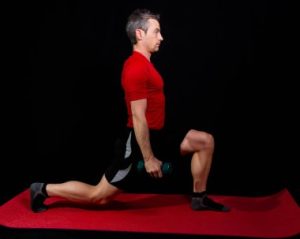
Glute Bridges and Hip Thrusts
Glute Bridge
Description and steps
The glute bridge is a fundamental exercise in strength training that primarily targets the gluteal muscles, offering a range of benefits from muscle activation to core stabilization. To perform a glute bridge, start by lying flat on your back with your knees bent and feet flat on the ground, hip-width apart. Engage your core muscles to stabilize your spine throughout the movement. Next, press your heels into the ground, lifting your hips upward until your body forms a straight line from your shoulders to your knees. Squeeze your glutes at the top of the movement, then slowly lower your hips back down to the starting position. Repeat this motion for several repetitions.
Muscle groups targeted
Muscle groups targeted during glute bridges include primarily the gluteus maximus, the largest muscle in the buttocks, which aids in hip extension and stability. Additionally, the hamstrings and lower back muscles are engaged to support the movement and maintain proper form. As you progress with glute bridges, you can increase the challenge by adding resistance such as holding a weight across your hips or elevating your feet on a bench.
Benefits and progression
The benefits of incorporating glute bridges into your fitness routine are numerous. They help strengthen and tone the glutes, which can improve posture, enhance athletic performance, and reduce the risk of injury in daily activities and sports. Glute bridges also contribute to overall core stability and lower back health by promoting better alignment and balance. Furthermore, they are versatile and can be modified to suit different fitness levels and goals, making them accessible for beginners and advanced athletes alike. Regular practice of glute bridges not only builds strength but also contributes to a more balanced and functional body, supporting better movement patterns and overall fitness.
Hip Thrust
Description and steps
The hip thrust exercise has gained popularity for its effectiveness in targeting the glutes, making it a staple in strength training routines. To perform a hip thrust, start by sitting on the floor with your upper back against a sturdy bench, knees bent, and feet flat on the ground. Place a barbell or a weighted resistance across your hips. Engage your core and drive through your heels, lifting your hips upward until your body forms a straight line from shoulders to knees. Squeeze your glutes at the top, then lower back down with control.
Muscle groups targeted
This movement primarily targets the gluteus maximus, but also engages the hamstrings and lower back muscles. The benefits of hip thrusts include enhanced glute activation, which can improve strength and power in lower body movements like squats and deadlifts.
Benefits and progression
It’s also beneficial for improving hip extension, crucial for activities like running and jumping. Progression can be achieved by increasing the weight or resistance, adjusting foot placement, or incorporating single-leg variations to further challenge stability and strength. Regular inclusion of hip thrusts in a well-rounded workout regimen can lead to better overall lower body strength and aesthetics.
Single-Leg Variations
Single-leg glute bridge
The single-leg glute bridge primarily engages the gluteus maximus, hamstrings, and core muscles. By lifting and lowering the hips using only one leg, it intensifies the activation of these muscles, promoting greater strength development and muscular balance between the left and right sides of the body. This exercise is beneficial not only for athletes looking to improve performance but also for individuals seeking to strengthen their posterior chain and enhance overall lower body stability.
Single-leg hip thrust
On the other hand, the single-leg hip thrust is another effective variation that targets the glutes, hamstrings, and core, with a specific emphasis on hip extension strength. By elevating the shoulders on a bench or stable surface and driving the hips upward on one leg, it challenges the muscles in a unilateral manner, helping to correct imbalances and improve functional strength. Incorporating these single-leg variations into a workout routine can lead to better overall strength, balance, and muscle coordination, making them ideal choices for anyone looking to maximize their fitness gains and improve athletic performance.
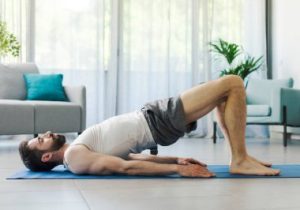
Reverse Hyperextensions
Description and Steps
Reverse hyperextensions are an excellent exercise for strengthening the lower back, glutes, and hamstrings. To perform a reverse hyperextension correctly, you need a sturdy bench or a reverse hyperextension machine. Begin by lying face down on the bench with your hips at the edge and your legs hanging off. Your upper body should be securely positioned on the bench, with your hands gripping the sides for support.
If using a reverse hyperextension machine, there will typically be a padded support for your abdomen and handles to hold onto. Start with your legs hanging straight down, then engage your core and squeeze your glutes to lift your legs up until they are in line with your torso or slightly higher. Ensure that the motion is controlled, avoiding any jerky movements that could strain your lower back.
Hold the top position for a moment, feeling the contraction in your glutes and hamstrings, before slowly lowering your legs back to the starting position. This exercise can be performed with body weight alone, or you can add ankle weights or resistance bands for increased intensity. Maintaining proper form is crucial; avoid overarching your lower back and focus on using your glutes and hamstrings to lift your legs. This movement not only helps in building strength and stability in the posterior chain but also aids in improving lower back health and preventing injuries.
Muscle Groups Targeted
The movement involves lying face down on a reverse hyperextension machine or a similar setup, with the hips positioned at the edge of the bench and the legs hanging freely. From this position, the lifter engages their core and lower back muscles to lift their legs upward and backward, creating a hyperextension at the hips. This motion places significant emphasis on the erector spinae muscles of the lower back, which are essential for maintaining proper posture and spinal alignment.
Additionally, the glutes, or buttocks muscles, are activated to extend the hips, contributing to both strength and aesthetic development in this area. The hamstrings, located at the back of the thighs, also play a crucial role in the movement, as they assist in hip extension and help to control the lowering phase of the exercise. Incorporating reverse hyperextensions into a workout routine can lead to improved lower back resilience, reduced risk of injury, and enhanced athletic performance, particularly in activities that require powerful hip extension, such as running, jumping, and lifting.
Benefits
Reverse hyperextensions are an incredibly effective exercise for strengthening the lower back and enhancing the overall function of the posterior chain. One of the primary benefits of reverse hyperextensions is their ability to target and fortify the lower back muscles, which play a crucial role in maintaining proper posture and reducing the risk of back pain. This exercise specifically works the erector spinae muscles, helping to improve spinal stability and endurance.
Additionally, reverse hyperextensions promote improved posterior chain engagement, which includes the glutes, hamstrings, and lower back. Strengthening these muscle groups not only enhances athletic performance by improving power and stability but also contributes to better functional movement patterns in everyday activities.
By regularly incorporating reverse hyperextensions into a workout routine, individuals can experience greater overall strength and resilience in the posterior chain, leading to more efficient and safer movement mechanics. Moreover, this exercise can help in injury prevention by ensuring that the muscles in the lower back and posterior chain are adequately conditioned to handle various physical demands. Overall, reverse hyperextensions are a valuable addition to any fitness regimen aimed at building a strong and balanced body.
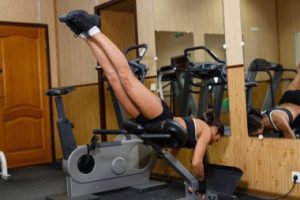
Good Mornings
Description and Steps
Good Mornings are an effective exercise primarily targeting the hamstrings, glutes, and lower back. Proper form and technique are crucial to maximize benefits and minimize the risk of injury. Begin by standing with your feet shoulder-width apart and a barbell resting across your upper back, not your neck. Engage your core and keep a slight bend in your knees throughout the movement. Initiate the exercise by hinging at the hips, pushing them backward while maintaining a neutral spine.
Your torso should lower until it is almost parallel to the ground, or as far as your flexibility allows without compromising your form. Ensure that your back remains straight and your chest open. As you lower your torso, keep the movement slow and controlled to avoid unnecessary strain on the lower back. Once you reach the bottom position, engage your hamstrings and glutes to return to the starting position, maintaining control and balance throughout.
The importance of controlled movement in Good Mornings cannot be overstated, as it ensures that the muscles are properly engaged and reduces the risk of injury, particularly to the lower back. Rushing through the exercise or using improper form can lead to poor muscle activation and increased likelihood of strain or injury. By focusing on technique and controlled movement, Good Mornings can significantly enhance lower body strength, improve flexibility, and contribute to better overall posture.
Muscle Groups Targeted
Hamstrings
Good Mornings are a highly effective exercise that primarily targets the posterior chain, focusing on key muscle groups such as the hamstrings, glutes, and lower back. When performing Good Mornings, the hamstrings are engaged as they work to control the descent of the torso and then contract to help lift the body back to the starting position. This stretching and contracting motion strengthens the hamstrings, promoting better flexibility and muscle endurance.
Glutes and lower back
Simultaneously, the glutes are activated to stabilize the hips and assist in the hip-hinging movement, contributing to overall glute strength and power. The lower back muscles, including the erector spinae, play a crucial role in maintaining a neutral spine and providing the necessary support to prevent injury. This engagement of the lower back not only strengthens the muscles but also enhances posture and core stability. By incorporating Good Mornings into a regular workout routine, individuals can achieve a more balanced and resilient posterior chain, improving their performance in various physical activities and reducing the risk of lower body injuries.
Variations
Single-leg good mornings
Good mornings are a staple exercise in many strength training and athletic programs due to their effectiveness in targeting the posterior chain, which includes the lower back, glutes, and hamstrings. Variations of the good morning exercise can provide unique benefits and help prevent workout monotony. One such variation is the single-leg good morning. This exercise requires balancing on one leg while hinging at the hips, which not only targets the same muscle groups as the traditional good morning but also engages the core and improves balance and stability.
To perform a single-leg good morning, stand on one leg with a slight bend in the knee, hinge at the hips while keeping the back straight, and lower your torso until it is almost parallel to the ground before returning to the starting position. This variation can be particularly beneficial for athletes who require unilateral strength and stability for their sports.
Banded good mornings
Another variation is the banded good morning, which incorporates resistance bands to increase the intensity of the movement. By securing a resistance band under the feet and around the neck or shoulders, the exercise becomes more challenging as the band creates constant tension throughout the range of motion. This variation not only strengthens the posterior chain but also enhances muscle endurance and explosiveness.
To perform banded good mornings, stand on a resistance band with feet shoulder-width apart, loop the band over the back of your neck or across your shoulders, and perform the traditional good morning movement by hinging at the hips and lowering the torso. Both single-leg and banded good mornings are excellent additions to any training regimen, offering unique challenges and benefits that can help improve overall strength, stability, and athletic performance.
Superman Exercise
Description and Steps
Proper form and technique
The Superman exercise is a bodyweight movement that targets the lower back, glutes, hamstrings, and shoulders, playing a crucial role in strengthening the posterior chain and improving overall posture. To perform the Superman exercise, start by lying face down on a mat with your legs extended straight and arms stretched out in front of you.
Begin by simultaneously lifting your arms, chest, and legs off the ground as high as possible while keeping them straight. Hold this elevated position for a few seconds, ensuring that you are engaging your core and squeezing your glutes. Then, slowly lower your limbs back to the starting position in a controlled manner. Proper form and technique are essential for this exercise to prevent strain or injury; keep your neck in a neutral position to avoid hyperextension and focus on slow, deliberate movements rather than rapid, jerky motions.
Importance of engaging the core
Engaging the core is vital in the Superman exercise as it stabilizes the spine and enhances the effectiveness of the movement. A strong core helps in maintaining balance and coordination while performing the exercise, ensuring that the lower back muscles are adequately targeted and reducing the risk of compensatory movements that could lead to injury. By regularly incorporating the Superman exercise into your fitness routine, you can improve lower back strength, enhance posture, and contribute to a more balanced and robust musculoskeletal system.
Muscle Groups Targeted
Lower back
The lower back muscles are activated as you lift your upper body, helping to strengthen and support the lumbar region, which is often prone to weakness and injury due to prolonged sitting or poor posture.
Glutes and hamstrings
Additionally, the glutes and hamstrings are engaged when you lift your legs, working together to stabilize the pelvis and extend the hips. The gluteus maximus, one of the strongest muscles in the body, plays a significant role in powering this movement, while the hamstrings assist in hip extension and knee flexion. This combination of muscle activation not only enhances strength and endurance in the targeted areas but also contributes to better overall functional movement, making the Superman exercise a valuable addition to any fitness routine.
Benefits
Strengthening the posterior chain
The Superman exercise, a popular and effective workout move, offers significant benefits, particularly in strengthening the posterior chain and improving spinal stability. The posterior chain, which includes the muscles of the back, glutes, hamstrings, and calves, plays a crucial role in maintaining proper posture, enhancing athletic performance, and preventing injuries.
By performing the Superman exercise, individuals engage these muscles in a coordinated effort to lift the chest and legs off the ground while lying face down, effectively targeting and fortifying the entire back. This engagement not only builds muscle strength and endurance but also contributes to better posture and alignment, reducing the risk of chronic back pain and other related issues.
Improving spinal stability
Additionally, the Superman exercise enhances spinal stability by reinforcing the muscles that support the spine, promoting a more resilient and flexible core. This improved stability is vital for everyday movements and athletic activities, as it helps distribute loads more evenly across the body, reducing strain on the spine and lowering the likelihood of injuries. Overall, incorporating the Superman exercise into a regular fitness routine can yield substantial benefits, making it an invaluable addition for anyone looking to improve their physical health and functional strength.
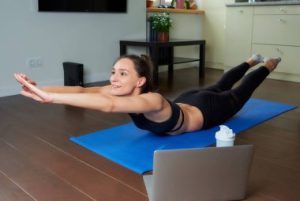
Inchworm Exercise
Description and Steps
Proper form and technique
The inchworm exercise is a dynamic, full-body movement that combines flexibility, strength, and coordination. This exercise begins from a standing position with feet hip-width apart. Initiate the movement by hinging at the hips, keeping your legs as straight as possible, and reaching your hands to the floor. Slowly walk your hands forward, maintaining a strong core and a neutral spine, until you reach a plank position.
Ensure that your shoulders are directly over your wrists and your body forms a straight line from head to heels. From this plank position, engage your core and begin to walk your feet forward towards your hands, keeping your legs as straight as possible. This movement should be controlled and deliberate, focusing on maintaining proper alignment and form throughout. Once your feet are close to your hands, stand up to return to the starting position, and repeat the exercise for the desired number of repetitions.
Proper form and technique are crucial in the inchworm exercise to maximize benefits and prevent injury. It’s essential to engage the core muscles to stabilize the spine and avoid sagging or arching of the back, especially when transitioning through the plank position.
Importance of flexibility and control
Maintaining straight legs during the forward walk helps in stretching the hamstrings and calves, enhancing flexibility. The inchworm exercise is particularly beneficial for improving flexibility and control. It dynamically stretches the posterior chain muscles, including the hamstrings, calves, and lower back, promoting greater range of motion and reducing the risk of injury. Additionally, the exercise requires precise control and coordination, engaging multiple muscle groups and improving overall body awareness and balance. By incorporating the inchworm exercise into your fitness routine, you can develop greater flexibility, strengthen the core, and enhance muscular endurance, contributing to improved overall physical fitness.
Muscle Groups Targeted
This movement primarily targets the core muscles, including the abdominals and lower back, as they work to stabilize the body throughout the exercise. Additionally, the inchworm engages the hamstrings as they stretch and contract to facilitate the movement of walking the hands forward and back. Furthermore, the shoulders play a significant role in supporting the upper body weight during the plank phase, enhancing shoulder strength and stability over time. Incorporating inchworms into your workout routine can improve overall flexibility, core strength, and shoulder stability, making it a beneficial exercise for enhancing functional fitness and overall body conditioning.
Benefits
The Inchworm exercise is a dynamic full-body movement that offers a range of benefits. As you perform Inchworms, starting from a standing position, you hinge at your hips to reach the floor with your hands, then walk them forward until you’re in a plank position. This movement engages multiple muscle groups simultaneously, including the core, arms, shoulders, and legs, making it an excellent exercise for overall strength development.
Additionally, the continuous stretching and contracting of muscles during the Inchworm help improve flexibility, particularly in the hamstrings and lower back. Moreover, the exercise promotes stability and balance by challenging your core muscles to maintain alignment throughout the movement. By incorporating Inchworms into your workout routine, you not only enhance muscular strength and flexibility but also improve coordination and endurance, making it a versatile addition to any fitness regimen.
Prone Swimmers
Description and Steps
Prone swimmers are a fundamental exercise in strength training, particularly targeting the muscles of the upper back, shoulders, and core. To perform prone swimmers correctly, start by lying face down on a mat or a flat surface, with arms extended straight out in front of you. Maintain proper form throughout the exercise, ensuring your neck is in alignment with your spine and your core muscles are engaged to support your lower back.
The movement begins with a slow and controlled lift of your chest and arms off the ground, squeezing your shoulder blades together as you raise your arms towards the ceiling. This action mimics the motion of swimming freestyle, emphasizing the extension and contraction of the upper back muscles.
The importance of executing prone swimmers with slow, deliberate movements cannot be overstated, as it maximizes muscle engagement and reduces the risk of injury by allowing for proper muscle activation and alignment. Focus on maintaining a steady pace throughout each repetition, breathing evenly to support endurance and muscle oxygenation. By incorporating prone swimmers into your workout routine with attention to form and controlled movements, you can effectively strengthen your upper body, improve posture, and enhance overall muscular endurance over time.
Muscle Groups Targeted
Prone swimmers are a highly effective exercise for targeting multiple muscle groups, primarily focusing on the lower back, glutes, and hamstrings. This exercise involves lying face down on the floor or a bench, extending the arms overhead, and lifting both the upper body and legs simultaneously in a swimming motion. As you lift your chest and legs off the ground, the lower back muscles, including the erector spinae, multifidus, and spinal erectors, engage significantly to stabilize and lift the body.
Simultaneously, the glutes, comprising the gluteus maximus, medius, and minimus, contract to extend the hips, while the hamstrings at the back of the thigh work to assist in leg elevation. Prone swimmers not only strengthen these key muscle groups but also improve core stability and posture, making them a valuable addition to any strength training or rehabilitation program aimed at enhancing back strength and overall muscular endurance.
Benefits
Prone swimmers, a foundational exercise in swimming and fitness training, offer a myriad of benefits for athletes and fitness enthusiasts alike. This exercise primarily targets the posterior chain, encompassing muscles like the erector spinae, glutes, and hamstrings, crucial for maintaining posture and stability. By engaging these muscles, prone swimmers promote strength and endurance in the back, helping to prevent injuries and enhance overall athletic performance.
Moreover, the repetitive motion involved in prone swimmers aids in improving shoulder mobility and flexibility. This is particularly beneficial for swimmers, as well as individuals engaged in sports requiring overhead movements, by enhancing range of motion and reducing the risk of shoulder impingement and related injuries. Incorporating prone swimmers into a comprehensive workout routine not only builds a strong foundation of muscular strength and joint flexibility but also supports functional movement patterns essential for daily activities and athletic endeavors.
FAQ: Body Weight Exercises That Mimic Deadlift
Q1. What are bodyweight exercises that can mimic the deadlift?
A. Bodyweight exercises that can mimic the deadlift include hip thrusts, glute bridges, single-leg Romanian deadlifts, and bodyweight good mornings. These exercises primarily target the same muscle groups as the deadlift, including the glutes, hamstrings, lower back, and core.
Q2. Can I build significant strength and muscle with bodyweight exercises instead of deadlifts?
A. Yes, you can build significant strength and muscle with bodyweight exercises by focusing on progressive overload, increasing the difficulty of the exercises, and ensuring proper form. Incorporating variations and increasing the intensity can help you achieve similar benefits to traditional deadlifts.
Q3. How do hip thrusts compare to deadlifts in terms of muscle activation?
A. Hip thrusts primarily target the glutes and can provide a similar muscle activation to the deadlift. While the deadlift also engages the hamstrings and lower back more significantly, hip thrusts are highly effective for glute development and can complement a deadlift regimen.
Q4. What is a single-leg Romanian deadlift and how does it mimic the deadlift?
A. A single-leg Romanian deadlift is a balance-intensive exercise that involves hinging at the hips while lifting one leg behind you. This exercise mimics the deadlift by targeting the hamstrings, glutes, and lower back, while also improving balance and stability.
Q5. Are bodyweight good mornings effective for lower back strength?
Yes, bodyweight good mornings are effective for strengthening the lower back. This exercise involves bending at the hips with a straight back and returning to an upright position, mimicking the hip hinge movement of the deadlift and engaging the lower back muscles.
Q6. Can glute bridges replace deadlifts in a workout routine?
A. Glute bridges can be a valuable addition to a workout routine and help target the glutes and hamstrings. While they might not fully replace the comprehensive muscle engagement of deadlifts, they are an excellent exercise for building lower body strength and stability.
Q7. What are some variations of the glute bridge to increase intensity?
A. Variations of the glute bridge to increase intensity include single-leg glute bridges, elevated glute bridges (using a bench or step), and adding resistance bands or weights. These variations help in targeting the glutes more effectively and adding progressive overload.
Q8. How can I ensure proper form while performing bodyweight deadlift alternatives?
A. To ensure proper form, focus on maintaining a neutral spine, engaging your core, and performing slow, controlled movements. Using a mirror or recording yourself can help identify and correct any form issues. Starting with simpler variations and gradually increasing difficulty can also help maintain proper form.
Q9. Are there any benefits of bodyweight deadlift alternatives over traditional deadlifts?
A. Bodyweight deadlift alternatives offer benefits such as reduced risk of injury due to the absence of heavy weights, improved balance and stability, and the convenience of being able to perform them anywhere without equipment. They can also be less intimidating for beginners.
Q10. How often should I incorporate bodyweight deadlift alternatives into my workout routine?
A. Incorporate bodyweight deadlift alternatives into your workout routine 2-3 times per week, allowing for adequate recovery between sessions. Combining these exercises with other strength training and cardiovascular activities can provide a well-rounded fitness regimen.
Conclusion
Body weight exercises that mimic the deadlift offer an excellent alternative for those seeking the benefits of traditional deadlifting without the need for heavy equipment. These exercises, such as single-leg Romanian deadlifts, glute bridges, and hip thrusts, effectively target the same muscle groups, including the glutes, hamstrings, and lower back.
Incorporating these movements into a fitness routine can enhance strength, stability, and overall functional fitness. Moreover, they provide versatility and accessibility, making it easier for individuals to maintain their workout regimen regardless of location or access to a gym. By focusing on proper form and progressively challenging oneself, body weight deadlift variations can significantly contribute to achieving fitness goals and improving overall physical health.